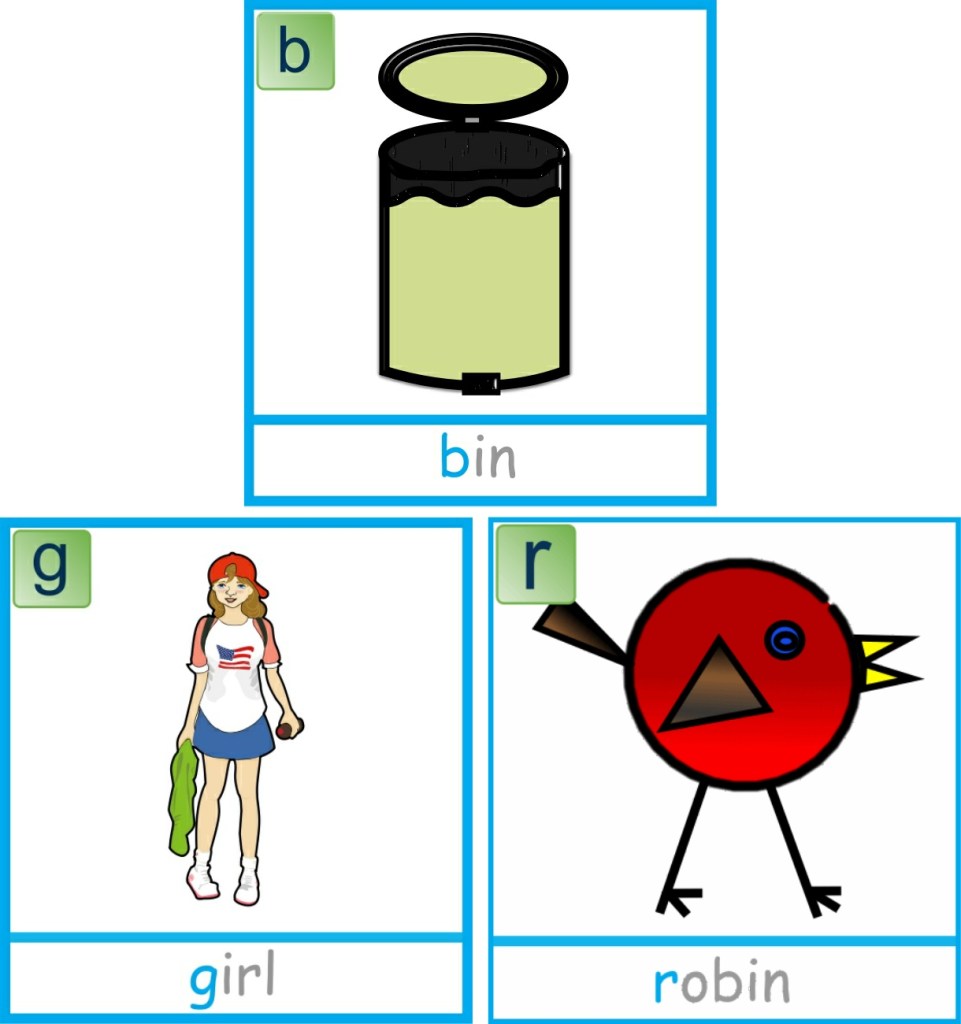Phonemic awareness is our ability to split words into their smallest sound units (individual phonemes) and to manipulate these sounds through segmentation, blending, substitution and deletion. This is based on what we hear and say, not the written word.
These games are great for playing in the car or when waiting in queues and hopefully soon when out and about with other friends and family.
We usually introduce this concept to children using one syllable CVC words, a word that has a Consonant followed by a Vowel and then another Consonant, such as cat, dog, sit, peg and sun.
Play, ‘I hear with my little ear…’
This is based on the game I spy with my little eye. In this version you say;
“I hear with my little ear the words (for example) cat, cake, key and kite. What sound do these words begin with?” The answer is they begin with the sound ‘k’ remember it is about what they hear not the spelling or letter names.
- To begin with focus on helping your child to identify the first sound in words, remember it is about what you hear not the spelling, so shop, ship, and chef all start with the same first sound ‘sh’; fish, photo, fog would also have the same initial ‘f’ sound. Try not to correct your child based on spelling conventions, as it is sounds you are working on – spelling comes later.
- Next help your child to listen and identify the last sound in a word such as ‘t’ in cat, sit and hat.
- Then focus on the medial, or middle, sound in the word such as ‘a’ in mat, lap and tap.
Once your child can identify the initial, medial and final sounds in a word the next step is to playing with the words through oral phoneme segmentation and oral phoneme blending. You are probably doing this already with your child without really realising it.
- Segmentation – being able to split words into their individual sounds, for example ‘cat’ into c-a-t.
Play, ‘How many sounds (phonemes) can you hear?’
This is a simple oral segmentation game just ask; “How many sounds (phonemes) can you hear in the word ‘hat’? The answer is 3. If your child can not count, they can show you using their fingers. The important thing is for them to hear and pick out the individual sounds in the word not the number of letters used to spell the word.
- Blending – being able to blend individual sounds together to say a word, for example d-o-g into dog. This is achieved by saying the sounds over and over again getting quicker until it sounds and can be identified as the word (a tricky skills to learn).
Play, ‘I’m thinking of a word and it has the sounds (phonemes)… What is the word?’
This oral blending game seems easy but can be very trick skill for some children to master, so do not be surprised if they find it hard to begin with. Use CVC words to begin with, but do keep trying as it is a very important skill to learn; be patient and over time they will get there.
Say “I’m thinking of a word and it has the sounds (phonemes) l-o-g what is the word?” The answer is log.
Important Tips
We often slow down our pronunciation of the word and over exaggerate them, thinking we are helping our children to hear these sounds. This can be useful to start with, but be careful not to do it all the time. The aim is for your child to pick out the sounds in normal speech patterns, as these can be different from the way that words are spelt.
The most important thing to remember when modelling this, and when playing games to help develop these skills, is to make sure you are making the sounds correctly. It can be very easy to pollute a sound by adding an extra ‘uh’ sound to it, so ‘k’ becomes ‘kuh’ which makes it very difficult for children then to blend sounds.
When your child feels comfortable using and playing with sounds in CVC words move on to CCVC words such as stop, clop and flop, following the same steps of identifying the initial and last sound in the word and then the vowel sound rather than the middle sound. Then play oral phoneme segmentation and blending games.






